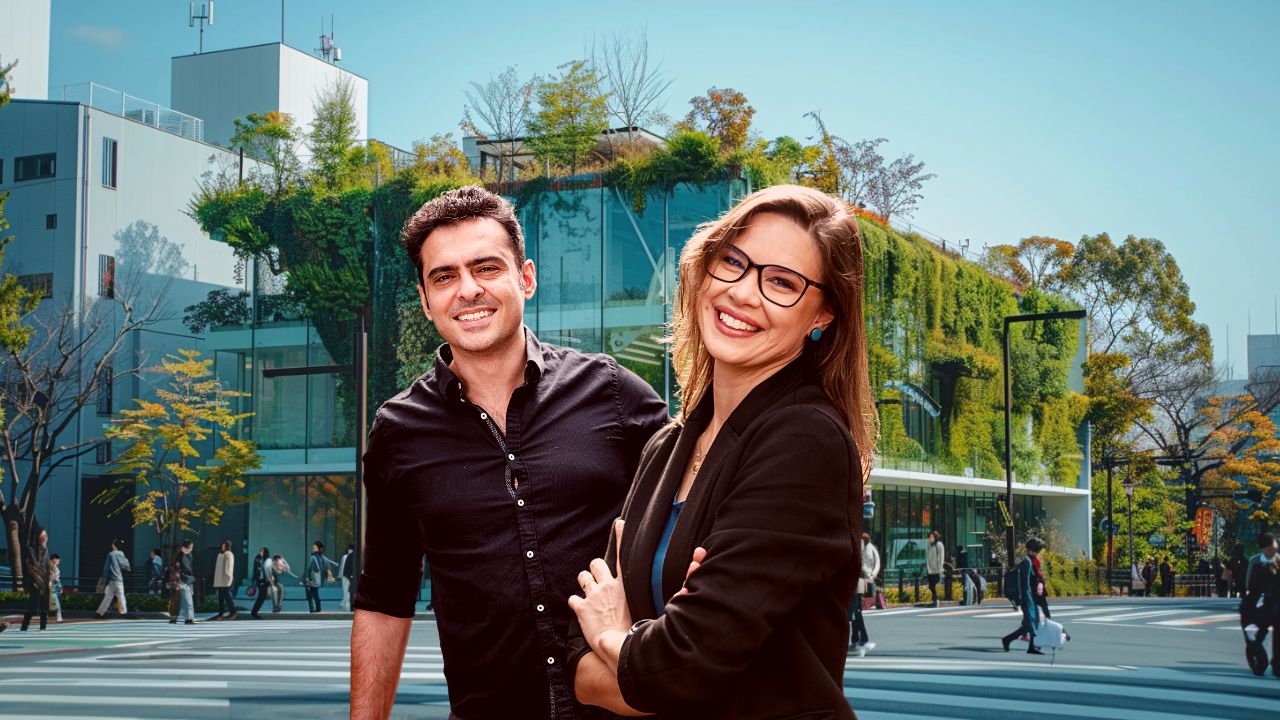




a FREE GLOBAL EVENT to the Forefront of SUSTAINABLE DESIGN
As we commemorate Amazon Rainforest Day on September 5th, it offers an apt moment to contemplate the significance of this extraordinary region and explore how sustainable architecture and eco-professionals can play a pivotal role in its preservation and sustainable development.
The Significance of the Amazon Rainforest and the Amazon Rainforest Day
The Amazon rainforest assumes paramount importance due to its unrivaled biodiversity and its crucial function as a global carbon sink. This vast ecosystem shelters approximately 10% of known species, making it a reservoir of biological diversity. Moreover, it plays a critical role in regulating Earth’s climate by absorbing and storing substantial quantities of carbon dioxide, thereby mitigating the impacts of climate change.
The Legal Amazon
The term “Legal Amazon” designates a specific geographical region in Brazil delineated by Brazilian law for administrative and environmental purposes. It encompasses nine states in northern Brazil, including Acre, Amapá, Amazonas, Maranhão, Mato Grosso, Pará, Rondônia, Roraima, and Tocantins.
The Legal Amazon region holds vast untapped potential for a bio-based economy, which hinges on the sustainable utilization of biological resources encompassing natural products, biodiversity, and renewable energy to foster economic growth while simultaneously preserving the environment.
The Amazon rainforest boasts an array of resources ripe for sustainable harvesting and transformation into valuable products, including pharmaceuticals, cosmetics, and sustainable building materials.
Rethinking the Amazon Rainforest Day in the Sustainable Architecture Point of View
Sustainable architecture emerges as a linchpin in unlocking the bioeconomic potential of the Amazon while safeguarding its unique ecosystem. Several pivotal facets exemplify how sustainable architecture intertwines with this endeavor:
Rethinking the Amazon Rainforest Day Tip #1: Eco-Friendly Infrastructure
Sustainable architects lead the charge in designing eco-friendly infrastructure that transcends conventional construction practices. This entails crafting energy-efficient buildings that not only reduce energy consumption but also curb carbon emissions. Furthermore, sustainable architects prioritize the integration of water-saving technologies, minimizing water wastage and ensuring responsible resource management.
A foundational principle in this realm is the selection of locally-sourced, renewable materials. Architects pivot towards materials abundant in the Amazon region, thereby reducing the environmental footprint associated with material transportation over long distances and bolstering local economies.
Rethinking the Amazon Rainforest Day Tip #2: Preservation of Ecosystem Services
Sustainable architectural practices assign a premium to preserving ecosystem services provided by the Amazon rainforest. These services encompass a wide spectrum of functions, including maintaining water quality, regulating regional climate patterns, and facilitating nutrient cycling. These services are not only vital for the rainforest’s health and resilience but also have a direct bearing on the sustainability of human activities in the region.
Architects employ design strategies that minimize disruption to these critical services. For instance, thoughtful placement of structures can circumvent disturbances to sensitive ecological areas, and sustainable landscaping practices can enhance the natural filtration of water resources. By safeguarding ecosystem services, sustainable architecture contributes to the long-term sustainability of both the Amazon ecosystem and the human communities reliant on it.
Rethinking the Amazon Rainforest Day Tip #3:Cultural Sensitivity
Sustainable architecture in the Amazon transcends mere environmental considerations; it also embodies cultural sensitivity and respect for indigenous architectural traditions and cultural practices. The rich tapestry of indigenous cultures in the Amazon is deeply intertwined with their surroundings and traditional building methods. Sustainable architects collaborate closely with indigenous communities, drawing inspiration from their time-tested construction approaches and seamlessly incorporating these methods into modern architectural designs.
This approach serves a dual purpose: it not only promotes sustainable building practices but also ensures the preservation of cultural heritage. By honoring and integrating indigenous knowledge, sustainable architecture enriches the cultural vitality of the Amazon’s diverse indigenous populations.
Rethinking the Amazon Rainforest Day Tip #4:Economic Opportunities
Sustainable architecture serves as a catalyst for economic opportunities within the Amazon region. One noteworthy avenue is eco-tourism initiatives. Architects design eco-friendly accommodations and visitor centers that harmoniously meld with the natural environment.
These facilities offer tourists immersive, low-impact experiences while generating revenue for the local economy. Additionally, sustainable architecture stimulates economic growth through job creation in sustainable construction projects and the production of eco-friendly building materials.
By championing these economic opportunities, sustainable architecture aligns the interests of both conservation and economic development, illustrating that a sustainable Amazon can concurrently be an economically vibrant one.


Discussing the Role of Eco-Professionals in the Amazon Rainforest Day
Eco-professionals constitute a diverse and highly skilled workforce dedicated to preserving the ecological integrity of the Amazon and advancing sustainability. Their expertise spans a wide array of disciplines, each contributing to the intricate tapestry of conservation and sustainable development in the Amazon.
Within the Amazon, a diverse range of eco-professionals is essential, including but not limited to:
- Ecologists and Biologists: These professionals spearhead biodiversity conservation efforts. They engage in extensive research to monitor and safeguard the vast array of species inhabiting the Amazon. Their work involves cataloging species, understanding their habitats, and identifying critical conservation areas.
- Environmental Engineers: Environmental engineers play a pivotal role in the sustainable management of the Amazon’s natural resources. Their responsibilities encompass designing and implementing eco-friendly infrastructure, ensuring that development minimizes its environmental impact. This includes managing water resources, waste disposal, and establishing sustainable transportation systems.
- Sustainable Architects: Sustainable architects bring their design expertise to the Amazon, crafting buildings that seamlessly harmonize with the natural environment. They achieve this by utilizing locally sourced and renewable materials, designing energy-efficient structures, and demonstrating profound respect for cultural diversity. In doing so, they ensure that architecture complements the Amazon’s innate surroundings.
- Conservationists: Conservationists ardently advocate for policies that safeguard the Amazon’s delicate ecosystems. They engage with governments, organizations, and local communities to champion conservation efforts. Their multifaceted roles encompass raising awareness, lobbying for protective legislation, and collaborating on community-based conservation initiatives.
- Geospatial Analysts: Geospatial analysts harness cutting-edge technology to comprehend land-use patterns and strategize for sustainable development. Their responsibilities include mapping out critical conservation areas, contributing to the design of protected zones, and vigilantly monitoring alterations in the Amazon’s landscape over time.
Eco-professionals, therefore, constitute a diverse and highly skilled workforce dedicated to preserving the ecological integrity of the Amazon and advancing sustainability. Their collective expertise spans a broad spectrum of disciplines, each of which plays a pivotal role in the intricate tapestry of Amazonian conservation and sustainable development.








a FREE GLOBAL EVENT to the Forefront of SUSTAINABLE DESIGN
Challenges Faced by Eco-Professionals to Be Discussed on Amazon Rainforest Day:
- Limited Funding and Resources: Eco-professionals frequently grapple with budgetary constraints and limited resources, perpetually challenged by the task of securing funding for vital activities such as research, conservation programs, and sustainable projects.
- Geographic Challenges: The vast expanse of the Amazon, coupled with its remote and often inaccessible locales, presents formidable logistical obstacles. Eco-professionals routinely find themselves traversing challenging terrains and covering significant distances to reach critical research and conservation sites.
- Interdisciplinary Collaboration: Effective sustainability efforts within the Amazon necessitate seamless collaboration across diverse fields. Eco-professionals must adeptly bridge gaps between scientific research, policy advocacy, cultural preservation, and sustainable development. Establishing and nurturing these collaborative networks can be intricate, yet they are indispensable for holistic solutions.
- Complex Regulatory Environment: Navigating the intricate regulatory landscape pertaining to environmental protection and indigenous rights can be an intimidating endeavor. Eco-professionals must remain vigilant, continually updating their knowledge of evolving laws and policies to ensure strict compliance with the legal frameworks in place.
- Cultural Sensitivity: Respecting the cultures of indigenous communities and their traditional knowledge is of paramount importance. However, achieving this respect is far from straightforward. It necessitates not only active engagement but also a profound understanding of and sensitivity to the cultural values and practices of indigenous communities, who often serve as the stewards of critical ecological knowledge.
In essence, eco-professionals, armed with their diverse expertise and unwavering dedication, constitute a cornerstone in the preservation of the Amazon’s ecological diversity and the promotion of sustainable practices in this invaluable region.


Amazon Rainforest Day: Unlocking the Benefits of Sustainable Architecture in the Jungle
Sustainable architecture in the Amazon holds the promise of multifaceted benefits that extend far beyond eco-conscious construction practices. Here are some of the key advantages:
Reduced Environmental Impact
Sustainable architecture in the Amazon prioritizes the use of locally sourced and eco-friendly materials. By utilizing resources that are abundant in the region, architects significantly reduce the environmental footprint associated with construction. This approach minimizes the energy and emissions typically linked to transporting materials over long distances.
Moreover, sustainable architectural designs incorporate energy-efficient features, further reducing energy consumption and greenhouse gas emissions. In a region as ecologically sensitive as the Amazon, these reductions in environmental impact are crucial for preserving its fragile ecosystems.
Increased Resilience to Climate Change
Sustainable architectural practices in the Amazon aim to build structures that are resilient to climate change-related challenges. This includes designing buildings that can withstand extreme weather events, which are becoming more frequent and severe in the region due to climate change.
These resilient structures not only enhance the safety of communities but also contribute to the overall stability and adaptability of the Amazon ecosystem.
Preservation of Indigenous Architectural Heritage
Sustainable architects working in the Amazon recognize the value of indigenous architectural traditions and cultural practices. They collaborate closely with indigenous communities, learning from their time-tested approaches to construction.
By incorporating these traditional building methods into modern architectural designs, sustainable architecture not only promotes ecological sustainability but also ensures the preservation of cultural heritage. This approach celebrates the diversity of indigenous architectural styles while respecting the deep connection between indigenous populations and their surroundings.
Creation of Sustainable Livelihoods
Sustainable architecture goes beyond constructing buildings; it also has the potential to stimulate economic opportunities within the Amazon region. One such avenue is eco-tourism initiatives. Architects design eco-friendly accommodations and visitor centers that seamlessly blend with the natural surroundings.
These facilities offer tourists immersive, low-impact experiences while generating revenue for the local economy. Additionally, sustainable architecture creates jobs in sustainable construction projects, supports local craftsmanship, and fosters economic growth, all while maintaining a minimal environmental footprint.
Amazon Rainforest Day: A Conclusion
As we mark Amazon Day, let us remember the Amazon’s vital role in sustaining life on Earth and the urgency of its conservation. Sustainable architecture and eco-professionals serve as the linchpins in achieving this future by combining innovative design with ecological stewardship.
As the world continues to recognize the importance of the Amazon, it is clear that these professionals and their collaborative efforts are essential for a sustainable and harmonious Amazonia, ensuring that the legacy of this remarkable region endures for generations to come.








a FREE GLOBAL EVENT to the Forefront of SUSTAINABLE DESIGN
